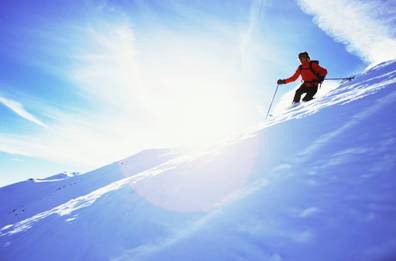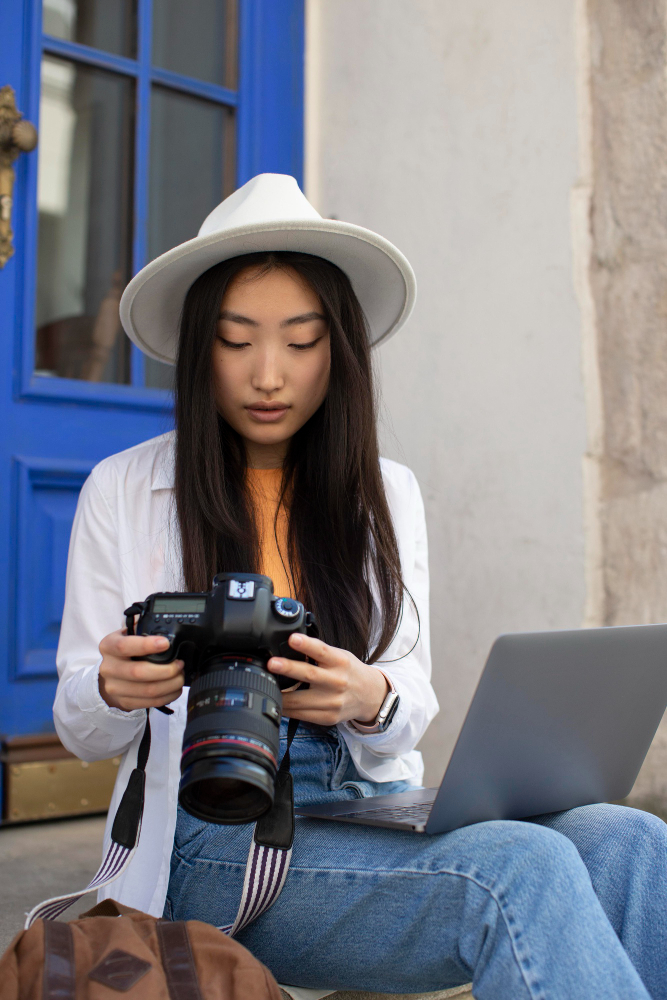 You wouldn’t think so but winter landscapes- or snow scapes – are one of the most challenging to photography enthusiasts. The difficulty can be that the average light tone of a snow scape is a lot lighter than what a medium grey tone is. This can put your meter readings out and give you an incorrect reading. In cases like these the snow is underexposed even though the camera may be telling you the exposure is just right.
You wouldn’t think so but winter landscapes- or snow scapes – are one of the most challenging to photography enthusiasts. The difficulty can be that the average light tone of a snow scape is a lot lighter than what a medium grey tone is. This can put your meter readings out and give you an incorrect reading. In cases like these the snow is underexposed even though the camera may be telling you the exposure is just right.
Another consideration when photographing winter snow scenes is that there are no defined lines or sharp shapes to give your scene some distinguishing depth in your composition. It can look completely flat. The softness is lovely, but when it’s ALL soft the photo looks flat, especially if the clouds are overhead. It can look like a blanket of grey/white.
The above photo would be quite dull if it weren’t for the telegraph poles to give it some depth and distance. The stark black lines going into the distance is what brings this photo to life. It adds a sense of mystery as to where the road is going and what we might find at the end of it. From a composition point of view, find some extra colour or shade in amongst your white/grey scene to help add depth and distance.
When you feel enthusiastic about Winter Photography you’ll see things differently. There are so many unusual patterns and shapes that newly formed snow and frozen water can bring you.
 You can get sensational snowscapes but you can also get incredible macro photos too. Take your macro lenses with you, your ND or polarizer if the sun is glaring off the snow. As well as underexposing the white snow in the midday sun can reflect pure white, bright light. You can also use a graduated filter to help add some colour or tone in an otherwise grey or white scene. Here’s more on winter photography.
You can get sensational snowscapes but you can also get incredible macro photos too. Take your macro lenses with you, your ND or polarizer if the sun is glaring off the snow. As well as underexposing the white snow in the midday sun can reflect pure white, bright light. You can also use a graduated filter to help add some colour or tone in an otherwise grey or white scene. Here’s more on winter photography.
Adding colour to your snow photography
Finding some colour in your snowscape will be a rewarding experience. For example if you are photographing wildlife, the colour of a bird against the stark white snow will be highly beneficial in itself. If you are photographing people, you can create some dramatic composition with angles of the snow and mountain side.
Portraits in your winter snowscape.
 What a perfect background snow makes for portrait photography. You can use the blanket of white around your subject as a way to completely focus in on their eyes and face. The extra added patches of colour from their ear muffs or red ski hat will stand out and give you some brilliant portraits. Meter from their face and medium areas of colour. Don’t worry too much about the darker parts of their clothing being a little underexposed, it’s their face you want to highlight the most.
What a perfect background snow makes for portrait photography. You can use the blanket of white around your subject as a way to completely focus in on their eyes and face. The extra added patches of colour from their ear muffs or red ski hat will stand out and give you some brilliant portraits. Meter from their face and medium areas of colour. Don’t worry too much about the darker parts of their clothing being a little underexposed, it’s their face you want to highlight the most.
Try some dramatic angles
If you are taking winter shots at a mountain range, try some dramatic angles. Perhaps take the shot from the angle at the base of the mountain with the steep slope angled severely upwards. Or perhaps try the opposite- a bird’s eye view of the scene below.
 Macro Winter Photography
Macro Winter Photography
Take your macro lenses with you. If you do not have a macro lens then take a magnifying glass with you instead. You’ll find some distortion at the edges of your frame but if the photo is what you want you can always edit this out after, or, perhaps you might like this effect. Icicles and frozen water are a brilliant opportunity for some winter macro photography. You can get some superb close up macro shots of frozen water, or icicles hanging from a tree. It looks as if the water has been suspended in time.
I should mention here that Amy has an impressive tutoring book for next to nothing. It’s called Digital Photography success. You may already have it if you’re an experienced photographer. If you haven’t it’s about time you down-loaded Digital Photography Success.
Contributed by Amy Renfrey

